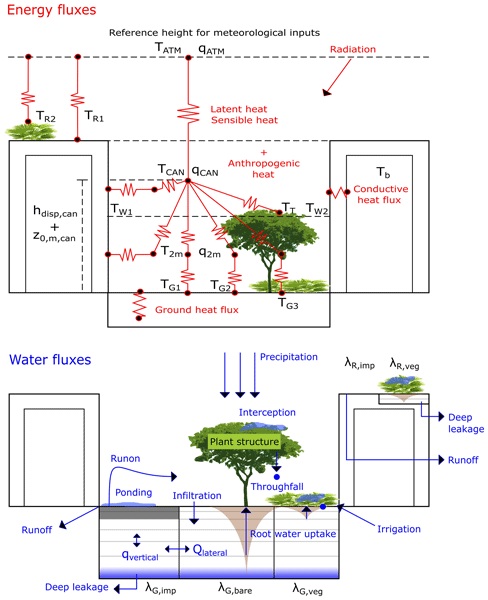The functioning of vegetation is essential to describe the exchanges of water, carbon and energy between the land surface and the atmosphere.
At URBES we quantify the biotic and abiotic factors regulating soil-plant-atmosphere interactions, from subsurface water flow, to root water uptake, evapotranspiration fluxes, and atmospheric boundary layer dynamics.
A quantitative uderstanding of such processes is key for applications in forestry and agriculture (e.g. for predicting the reponse of ecosystems to climatic and and anthropogenic disturbances), but also for guiding the desing of greener and healthier cities. In fact, urban green spaces can provide multiple ecosystem services but most of existing afforts aimed at greening urban areas are guided by aesthetic and qualitative principles without a real quantitative understanding of the underlying processes, scales, and feedback at play.
